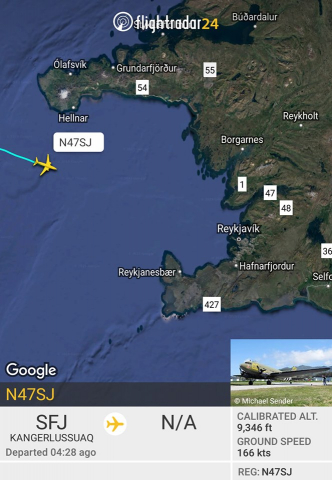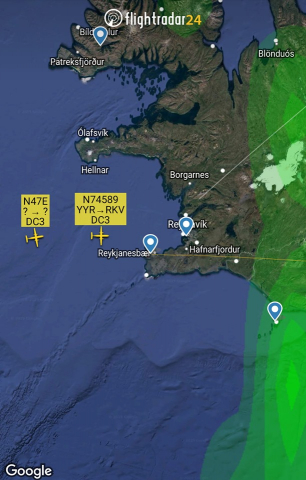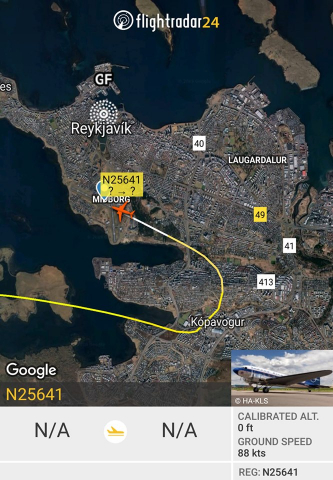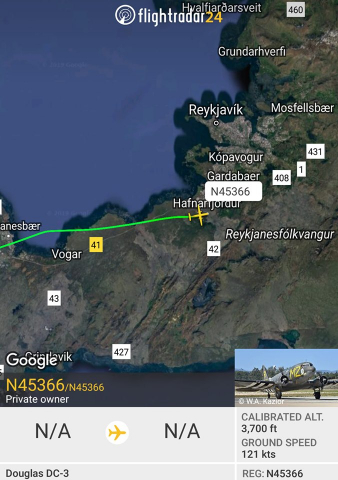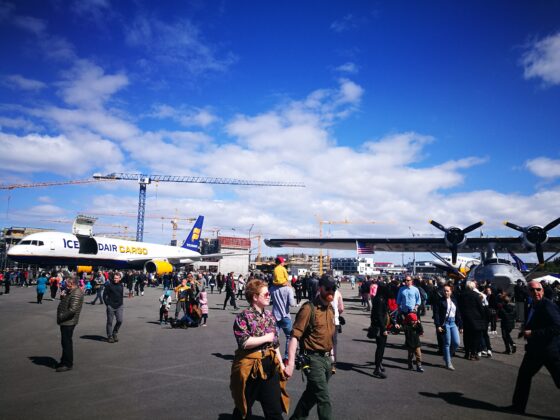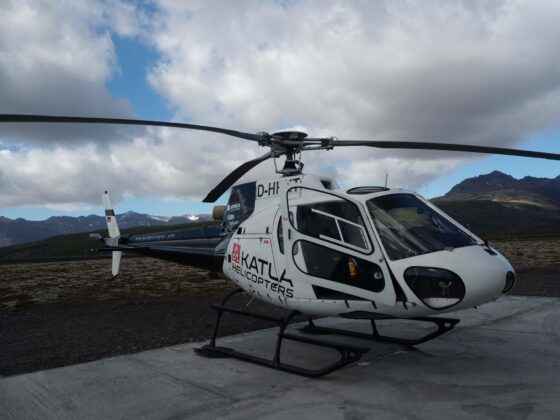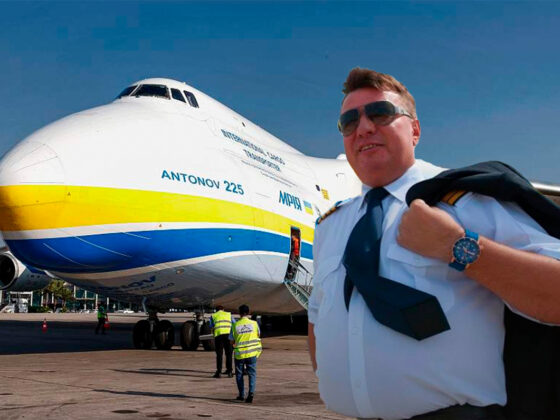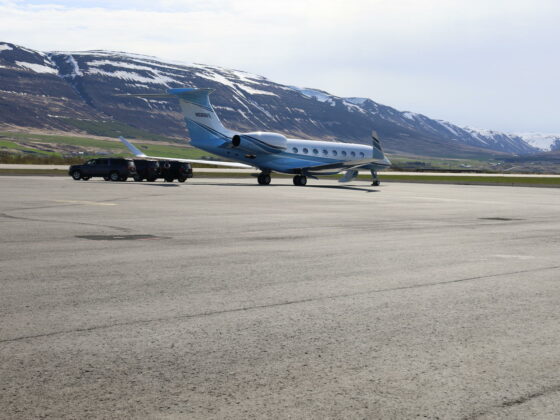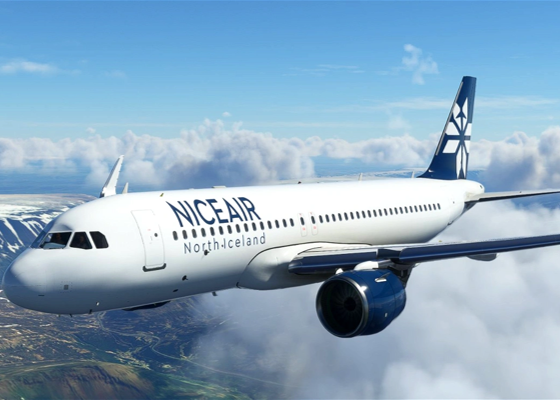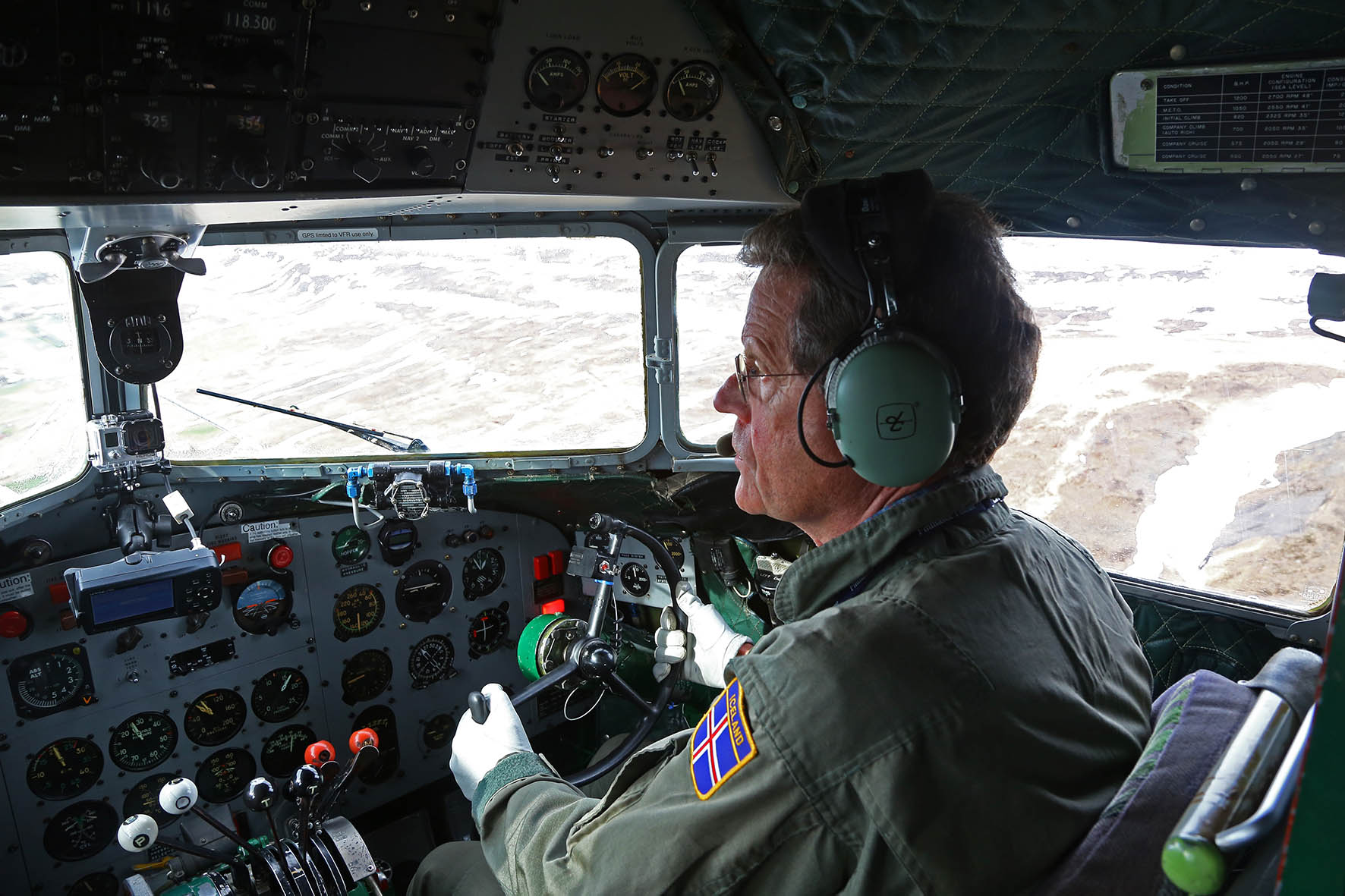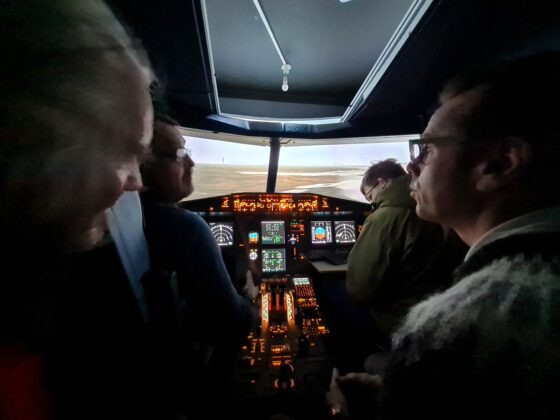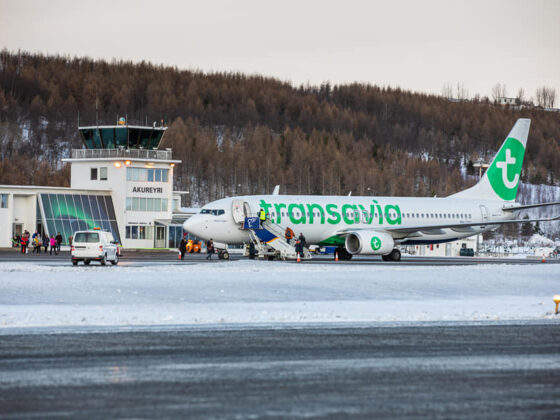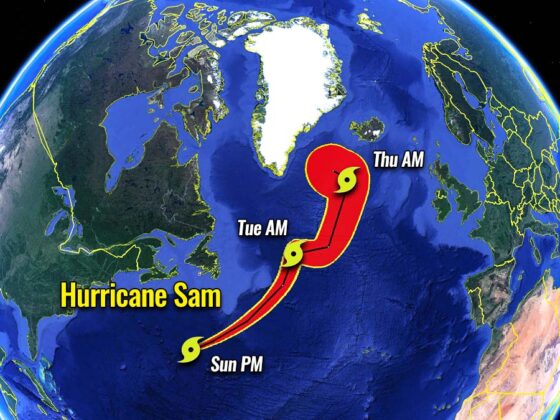The air convoy of piston-engined military transports C-47s, as well as civilian DC-3s, has travelled through Iceland on their way to Normandy. Dozens of planes are going to land hundreds of paratroopers. The way it was in 1944 was exactly recreated 75 years later. Flugblogger discovered the backstage of preparation to Normandy landings in the 21st century.
It is a long-forgotten feeling. Summer, sun, light wind. You are 10 years old playing outdoors. You are hearing rumbling sound in the sky. You know this is a plane. You are running to the nearest airfield, which has no fence back then, to see the magical metal bird landing on the gravel or paved runway. The first touchdown with two main gears, the tail wheel gently touches the ground afterwards. The plane is suddenly turning from metal flash to lazy hippo, slow taxing to its ramp in the cloud dust.

In May of the year, 2019 Icelandic aviator fans in Reykjavik capital area turned into kids again. It was thanks to the ambitious idea to recreate the biggest ever landing operation in human history. 6 of June 1944 the great landings in Normandy had opened a western front in Europe. 13 100 paratroopers were dropped from hundreds of Douglas C-47 air transports. 75 years later aviation enthusiast, historians and participants of the original event came together to recreate the landing, dedicating it to the great exploit of brave combatants in World War II.
The actual goal in 2019 is to collect 30 Dakotas in the UK, then fly to Normandy and perform paratroopers landing. The rare retro planes were invited from all over the world. The new formation was called “D-Day Squadron”. Half of them was going to arrive from the US and Canada.
It means, that for these 15 planes, as 75 years ago, the first challenge will be to cross the Atlantic Ocean with it lack aerodromes and hard predicted weather. Every piece of ground with a proper runway was considered: Goose Bay airfield in Canada, Narsarsuaq in Greenland, Reykjavik in Iceland.
Director of Communications of D-Day Squadron Stephen Lashley explained Flugblogger, why Iceland was one of the most crucial points on the DC-3’s cross-Atlantic route. “The reason for the refuelling stop in Iceland was a question of range. With ferry tanks, some aircraft were able to bypass the stop in Narsarsuaq, Greenland and fly straight to Iceland, but I am unsure if any stopped in Greenland but then made the decision to fly straight to Prestwick, Scotland”, said Stephen Lashley.

It was decided that all 15 planes will come to Iceland in three groups, then stay for a night in Reykjavik before continuing the trip. The news which came at the beginning of March was a bit overwhelming, considering the Reykjavik capital airport is comparatively small for such a big group of planes. Later during a personal conversation with Flugblogger, one of the Reykjavik airport ground crew said, that it actually would be no problem to accommodate half of D-Day Squadron at the same time. Since closing the runway 06/24, the airport has got an additional room, which could be used as an apron for this kind of events.
The first group of D-Day Squadron had arrived on 20 of May. The first plane was C-47 “Placid Lassie” N74589, followed by C-47A N47E “Miss Virginia”. The third came Douglas DC-3C N25641 “Liberty”, performing U-turn over Reykjavik downtown. Flugblogger was on the ramp half hour later “Liberty” landing. There was no free space near the airport fence around the apron, where three planes were parked. Locals did photos and videos through the fence, above the fence, climbing on the top of their cars. They spent there more than an hour. The forth C-47 N47TB was expected there. Unfortunately, the plane did not make its way to Reykjavik airport before 23:00 Zulu and the aerodrome was closed for a night. The C-47 with the sign “It’s all, brother!” on its nose had landed in Keflavik airport and flyover to Reykjavik the next day. The fifth plane, the final of the first group, has arrived on the 21st of May. DC-3 N8336C “The spirit of Benovia” performed flight over Reykjavik before landing on the runway 31.

The second group was expected shortly and, according to the plan, should be added to the newcomers at the apron of Reykjavik airports. However, Atlantic weather had mixed everything.
“The plan was to fly spread out in groups of three”, told Stephen Lashley, “What you may have heard was that the aircraft would be all at the airport at the same time. Weather challenges ended up spreading it out further. In Iceland, we had to coordinate accommodations for the crews, which was somewhat challenging due to the arrival and departure dates fluctuating based on changes to schedules to deal with weather along the route. But the airport authorities with ACE FBO coordinated the refuelling itself very efficiently and provided us with a discount on our fuel.”
While waiting, the gates to the planes were opened for local public and the use the opportunity. The planes in Reykjavik were surrounded by interested people the whole evening. The first group, therefore, had left Iceland on the next morning only.

23rd of May was the day of arrival of the next D-Day Squadron group. C-47 N47SJ, built in 1943, had appeared over Reykjavik in the middle of the day. She was followed by C-47 N45366 and C-47 N103NA “Flabob Express”. The forth was C-47 “Virginia Ann” N62CC and fifth – DC-3C N877MG.
Should be enough? Nobody expects more, but then the rumbling was echoed. Not from the west, though. From the north. The only Icelandic DC-3 TF-NPK “Páll Sveinsson” could not miss the whole party and had arrived at the capital airport from Akureyri. Therefore, the historical moment was created. The first time for the last 50 years there were six DC-3/C-47 in Reykjavik at the same time.
Icelandic DC-3 was supposed to be a participant of D-Day Squadron. In September 2018 D-Day Squadron website put announcement, stating: “Daks over Normandy is proud to announce that Icelandair DC-3 TF-NPK “Páll Sveinsson” is confirmed for next year’s event”. In December 2018 Tómas Helgason, the chairman of “DC3 Þristavinir”, the club, which operates the plane, told Flugblogger, that they “are pushed to come there with our plane, [they] will aim for that, but it is a question of money”. In May 2019 it turned out that there was no means found for support of TF-NPK’s flight over Normandy.

The second group has left shortly after, leaving Icelandic DC-3 alone on the apron. The last planes of D-Day Squadron had arrived only in three days. It was DC-3 N24320 “Miss Montana”, who marked the beginning of week-long airshow in Reykjavik. The second C-47 N150D had arrived the next day. On 28 of May, one of the oldest DC-3 N18121 had landed in Reykjavik airport. The plane was built in 1937. The fourth DC-3 C-GAWI had arrived on 30 of May, however, despite the daylight arrival, had landed in Keflavik. It departed from Iceland shortly on the same day. The fifteens DC-3 of the cross-Atlantic group was N341A, which had arrived in Reykjavik in the evening. All planes then left Iceland and TF-NPK became the only DC-3 in Iceland again.

The D-Day Squadron will perform the historical flight on 7 of June. Then the planes will fly to different directions. There will be another chance to see them in Iceland again. “Some aircraft will return via the Blue Spruce Route [through Iceland and Greenland]. Others are going into temporary storage in Europe, so they can attend airshow later in the summer and fall. Some are also heading to an airshow in Venice. I am unsure of the route the Venice aircraft are taking home, but probably the Blue Spruce Route”, Stephen Lashley told.


